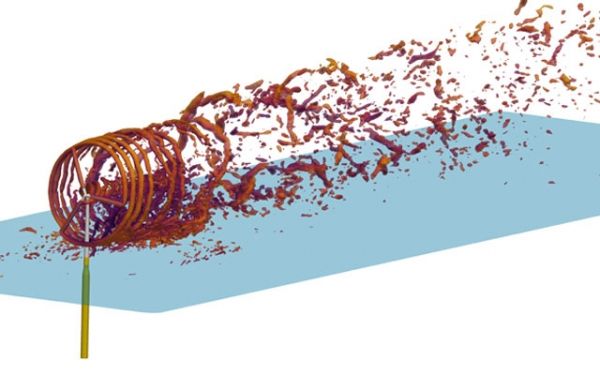Over the past few years, offshore wind farms have emerged across the world as a viable source of energy. While these powerful floating wind turbines are typically more than 800 feet tall and weigh over a ton, they reduce land-use concerns, access better offshore wind resources, and can generate more power than land wind turbine farms. However, they present a complex engineering design problem: how can they be optimized to operate in the uniquely challenging offshore environment?
In a Journal of Physics: Conference Series paper published this summer called Large eddy simulations of floating offshore wind turbine wakes with coupled platform motion, researchers from the University of Massachusetts Amherst and the National Renewable Energy Laboratory (NREL) discussed their efforts to advance our knowledge of this issue.
Specifically, the Comet supercomputer at the San Diego Supercomputer Center (SDSC) and the Stampede2 supercomputer at the Texas Advanced Computing Center (TACC) were used to perform simulations that showed how floating turbine wakes are very similar those of fixed-bottom turbines, except that floating turbine wakes are deflected upward and have slightly stronger turbulence at the edge of their wakes.
Read more at University of California San Diego
Image: A large eddy simulation of the wake behind a floating offshore wind turbine. Credit: Hannah Johlas, University of Massachusetts Amherst


